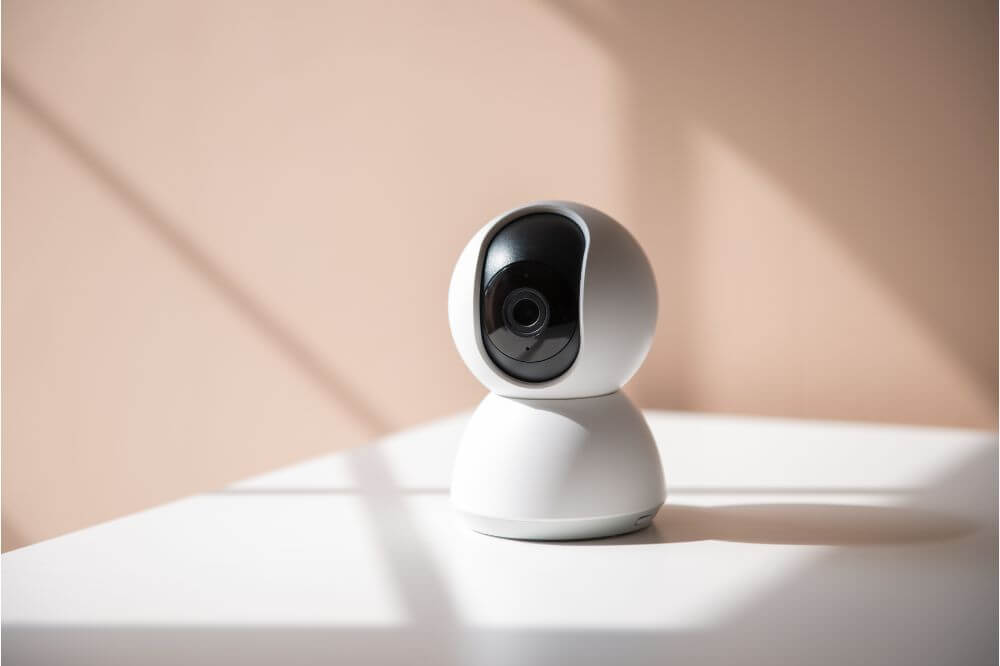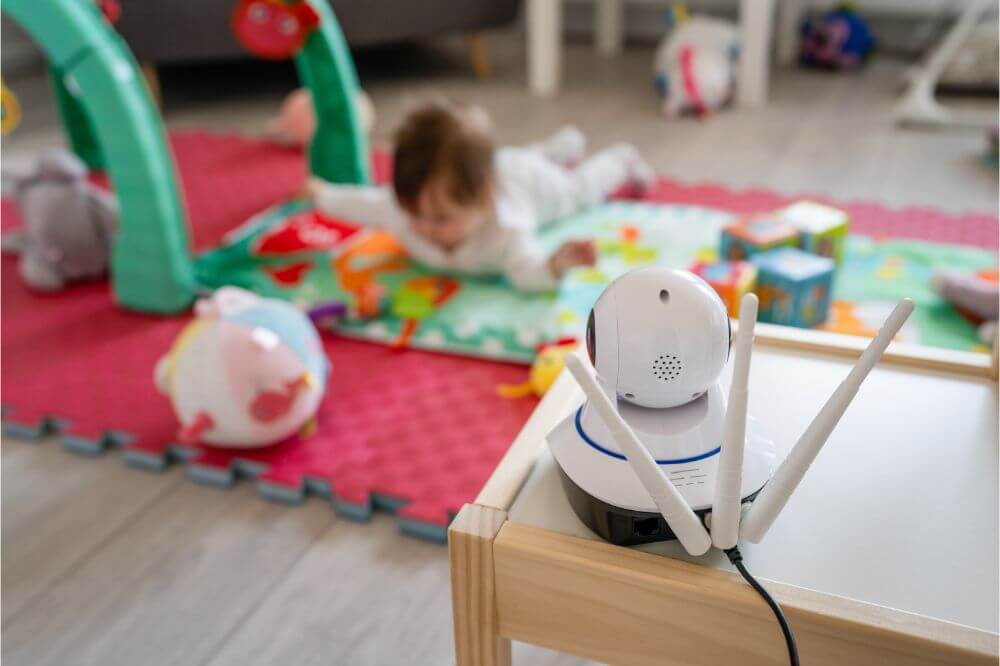Baby monitors are essential tools for parents, providing peace of mind and a sense of security. With advancements in technology, these monitors now offer more features than ever before, making it easier to keep an eye on your little one. However, these added functionalities also open up the possibility of hacking, potentially putting the safety of your child at risk.
In this article, we’ll explore the importance of securing baby monitors, the different types available, and how to tell if baby monitor is hacked.
The importance of securing baby monitors
Securing your baby monitor is essential to prevent unauthorized access and protect your family’s privacy. Hackers can gain entry to a poorly secured device, spying on you and even interacting with your child.
By understanding the types of baby monitors available and taking adequate safety measures, you can safeguard your home and enjoy peace of mind when monitoring your baby.
Types of baby monitors: audio, video, and Wi-Fi
There are three main types of baby monitors: audio-only, video, and Wi-Fi enabled. Audio monitors simply transmit sound, making them less susceptible to hacking. Video monitors provide visuals and may connect to a smartphone or other device, while Wi-Fi enabled monitors use an internet connection for remote access.
Understanding the differences in these monitors can help you better assess your security risks and take the appropriate precautions to avoid potential hacking threats.
Warning signs of hacking
To determine if your baby monitor has been hacked, pay attention to warning signs such as unusual noises, unfamiliar voices or sounds, strangeness in camera movement, and unexplained changes in temperature. Also, watch for modifications in access settings, like changed passwords or usernames.
Unusual noises or voices
One clear indication of a hacked baby monitor is if you hear unusual noises or voices coming from the device. Hackers may communicate with your child or even just use the speaker for malicious noises. If you notice strange sounds coming from your baby monitor, it’s essential to investigate further to determine if the device has been compromised.
Camera movement that’s not initiated by you
Another red flag to watch out for is if the camera in a video baby monitor is moving or adjusting without your input. This could indicate that someone has taken control of the camera remotely, and they may be actively watching or monitoring your baby’s room without your knowledge.
Always be vigilant about camera movements that you haven’t initiated yourself and investigate any suspicious activity.
Unexplained change in temperature settings
Another indication that your baby monitor might be hacked is if you notice a sudden unexplained change in temperature settings. This could mean that someone has gained access to your monitor and is manipulating the settings remotely.
Ensure that you have not accidentally changed the settings yourself, and if the issue persists, it’s best to take precautionary measures such as changing passwords and checking your Wi-Fi network security.
Changes in access settings, such as passwords or usernames
Another indication that your baby monitor may be hacked is if you notice unexpected changes to access settings, such as your password or username being altered without your knowledge. This could signify that someone has accessed the monitor’s settings and tampered with its security, allowing them to potentially monitor your baby without your consent.
If you notice any unexplained changes to your access settings, take action immediately to secure your baby monitor and protect your child’s privacy.
Steps to take if your baby monitor has been hacked
If you believe your baby monitor has been hacked, take immediate action by changing all associated passwords and the Wi-Fi network’s password. Update the monitor’s firmware, reset it to factory settings, and contact the manufacturer or support team for further assistance.
Change all passwords associated with the device and Wi-Fi network
After confirming that your baby monitor has been hacked, immediately change all passwords associated with the device and your Wi-Fi network. Use strong, unique passwords that are not easily guessable. This will help prevent unauthorized access to your baby monitor, ensuring the safety and security of your child and your home.
Update the firmware of the baby monitor and any associated devices
One effective way to address potential hacking is by updating the firmware of your baby monitor and any associated devices. Manufacturers often release firmware updates to fix security vulnerabilities and improve the performance of their products.
Be sure to check their website or contact the manufacturer for information on updating the firmware. Keeping your devices up-to-date will reduce the chances of cybercriminals exploiting any vulnerabilities that might exist in older software versions.
Reset the device to factory settings
After updating the firmware and changing passwords, it’s crucial to reset the device to factory settings. This helps to erase any suspicious configurations or settings, potentially eradicating any presence of the hacker in your baby monitor system. This often requires a simple reset button or a combination of keys on the device.
Contact the baby monitor manufacturer or support team
After resetting the device and updating firmware, don’t hesitate to contact the baby monitor manufacturer or their support team. They can provide you with additional guidance and may also be able to alert you to other security issues or vulnerabilities related to your device.

Tips for preventing baby monitor hacking
To prevent baby monitor hacking, make sure you frequently update your device’s firmware and software, use strong and unique passwords, and enable two-factor authentication whenever possible. Also, secure your home Wi-Fi network and consider disconnecting the monitor from the internet when it’s not in use.
Regularly update your device firmware and software
To further protect your baby monitor from hackers, it’s essential to regularly update your device’s firmware and software.
Manufacturers often release updates to fix known security vulnerabilities and improve the device’s overall performance. Therefore, make sure to periodically check for updates and install them as soon as they’re available. This simple action can significantly decrease the likelihood of your baby monitor being hacked and ensure you’re using the most secure and optimal version of the product.
Use strong and unique passwords
To better protect your baby monitor from hacking, it is essential to use strong and unique passwords. Avoid using easily guessable phrases like “password,” “admin,” or “123456.” Instead, create a password that includes a combination of upper and lower case letters, numbers, and special characters.
Additionally, it’s a good idea to change your passwords periodically and not to use the same password across multiple devices and accounts. This extra precaution can help keep your baby monitor and connected devices more secure.
Enable two-factor authentication whenever possible
Another way to protect your baby monitor from hacking is by enabling two-factor authentication (2FA) whenever possible. Most Wi-Fi-enabled monitors that come with supporting mobile apps offer 2FA as a security feature. This adds an extra layer of protection by requiring not only your password but also a unique code that is sent through text, email, or an authenticator app.
Secure your home Wi-Fi network
Besides protecting your baby monitor, securing your home Wi-Fi network is also crucial. Ensure you have a strong password for your Wi-Fi network and consider periodically changing it.
Additionally, it’s a good idea to enable encryption (WPA2 is recommended) to prevent unauthorized access to your network. Keep your router’s firmware up to date and disable remote administration to minimize hacking risks.
Disconnect the monitor from the internet when not in use
To ensure peak security, disconnect your baby monitor from the internet when it’s not in use. This reduces the window of opportunity for potential hackers, keeping your device and precious little one safer while providing peace of mind.
Conclusion
Ensuring the security of your baby monitor is crucial for your peace of mind and your child’s safety. By staying vigilant for warning signs, taking action if needed, and implementing preventative measures, you can minimize the risk of hacking and keep your little one safe and sound.

